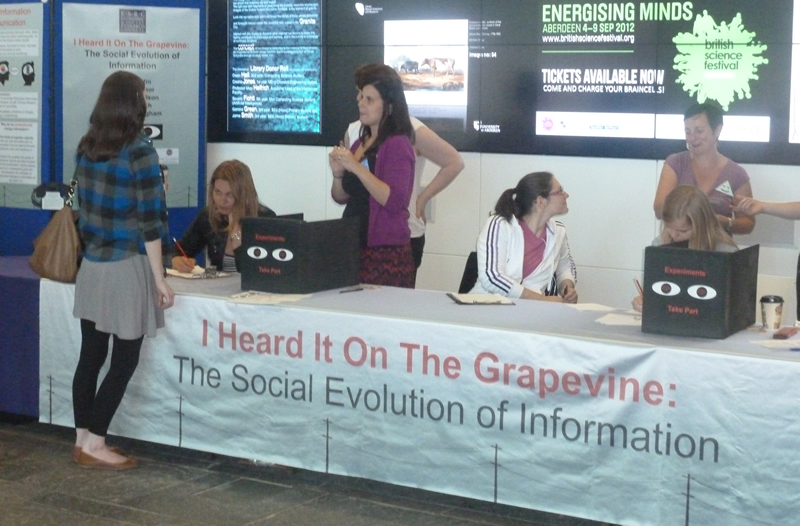

How Do Stereotypes Form?
We are
all familiar with the idea of stereotypes as bits of information associated
with social groups (e.g., Scottish people are miserly & dour). It
doesn’t matter whether or not we endorse these stereotypes, we are all
equally aware of their existence and content.
But how is it that certain characteristics become associated with stereotyped
groups in the first place? Once stereotypes have formed are they set
in stone or can they change?
In the Person Perception Lab we think that, like other knowledge systems, such as languages, stereotypes might form and change as an unintended consequence of social transmission.
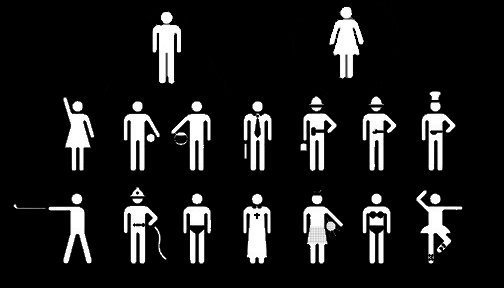
Information Changes as it is Socially Transmitted
In 1932, Sir Frederic Bartlett asked people to remember a story and retell it to a second person; the second person then retold the story to a third person, the third to a fourth and so on. This process was repeated to form multiple story-telling chains.
Because the information passed along each chain was dependent on the unique memories of the people in them, by the end of the process the stories in the chains were very different from one another even though they began from the same start point.
Interestingly, social transmission also resulted in similar changes across the different chains. As the stories were continually retold, they began to get shorter, simpler and more structured until eventually they could be transmitted successfully word-for-word.
It
seems that while the content of individual memories is variable, the
process of social transmission leads to changes in the form of information
that are predictable.
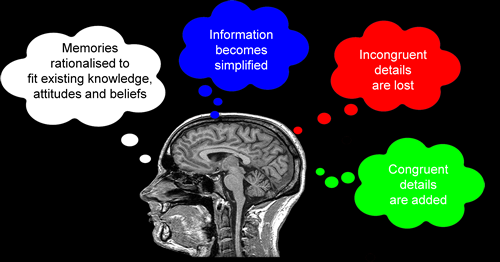
The Evolution of Language
The fact that information changes in predictable ways as it is socially transmitted has become of central importance to scientists interested in how languages develop. It is proposed that as languages are repeatedly transmitted across generations they develop structure, become easier to learn and are therefore more easily passed on in the future.
Experimental studies by Edinburgh
University’s Language Evolution & Computation group have
examined how ‘artificial languages’ form and change as they are passed
along a chain of individuals.
They
have found that a remarkable thing happens as artifical languages are
passed from person to person – within a few generations the language
quickly begins to evolve, developing structure, becoming more simplified
and easier to learn.
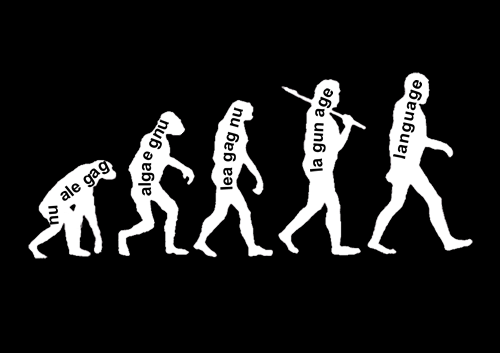
Forming Stereotypes of Novel Social Targets
We have examined in the lab whether, like an evolving langugae, passing information from person to person in a chain can explain the development of the simplistic structures and shared knowledge systems associated with stereotypes.
Creating ‘alien beings’
We created 27 novel ‘alien beings’ by combining category features from
three different dimensions (shape, colour & movement). We then randomly
assigned 6 personality traits to each alien.
Getting
to know the aliens
The first person in a chain was asked to learn the traits that described
each alien. We then tested their memory for the traits associated with
each one.
Social transmission
The traits the first person remembered (whether accurate or not) were
passed on to the next person to learn. The process of using the test
responses from one person as the learning materials for the next was
repeated 7 times to create a social transmission chain.
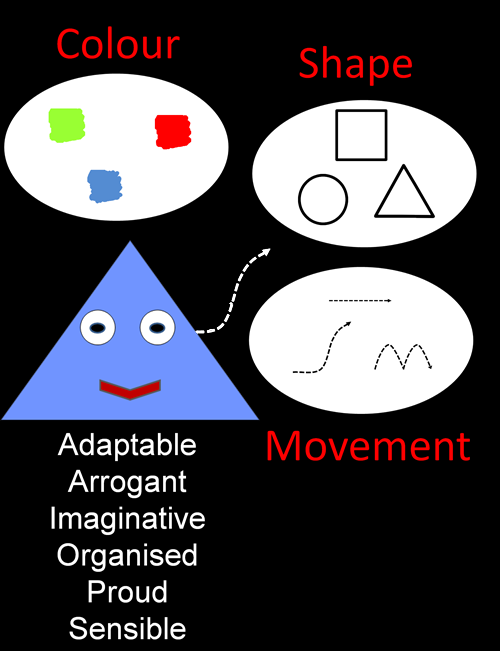
The Formation of Stereotypes Through Social Transmission
When the experiment starts, the relationship between the aliens and their traits is entirely random and as a result the learning task is quite hard - people find it difficult to correctly remember which traits go with which aliens.
However, as the information is passed down the chain the relationship between the aliens and traits develops a structure that supports learning - people impose simplifying associations between alien features and types of traits. For example, all green aliens might be seen as “caring” while all blue aliens are thought of as “arrogant” and “pushy”.
By the end of the chain there is a relatively structured, simplified and easily learnable relationship between alien features and the possession of certain traits - a stereotype.
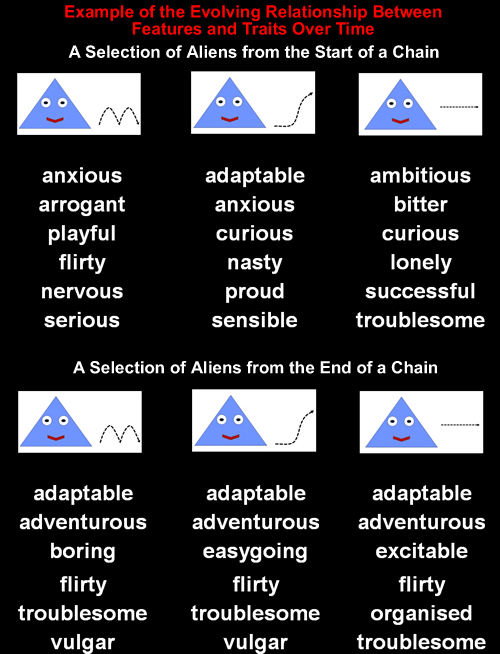
Images from the exhibition

show us your badges
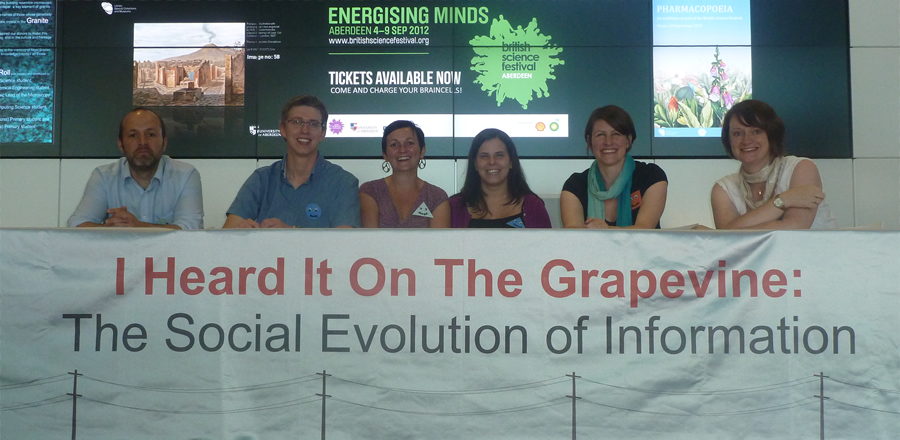
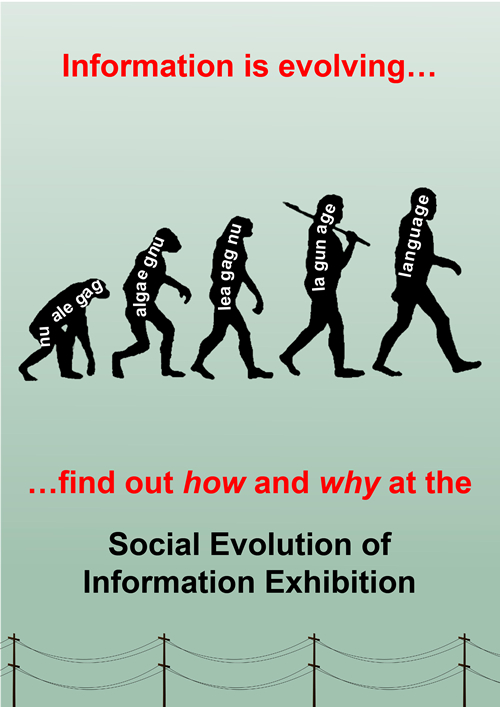
the exhibition
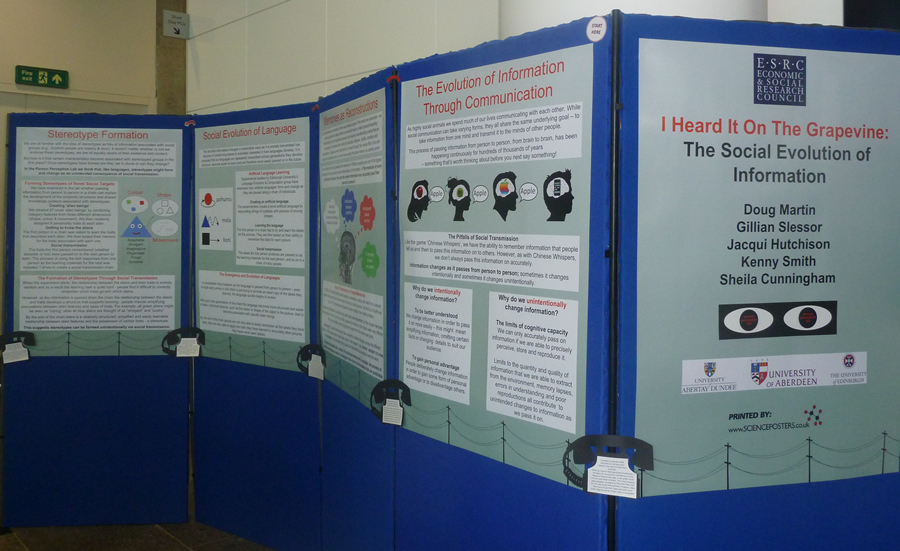
energising minds
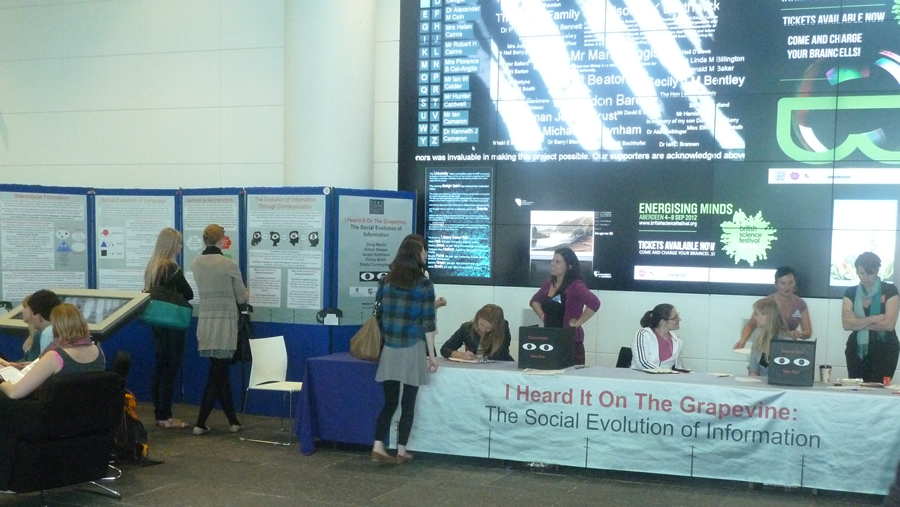
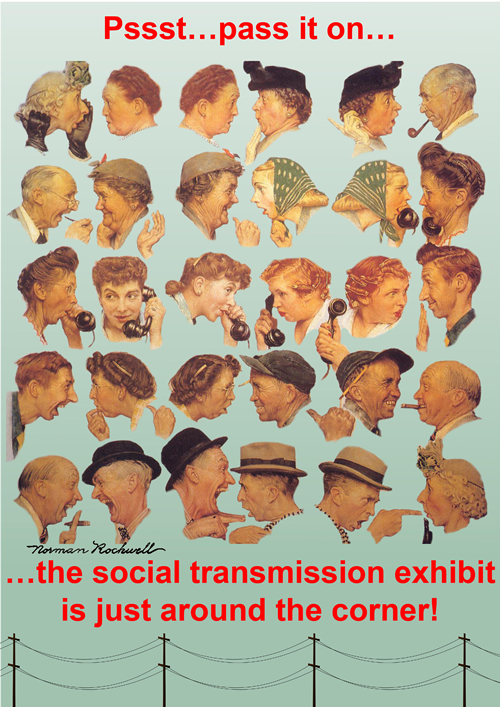
spot the badge thief
